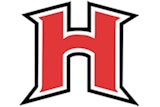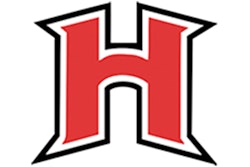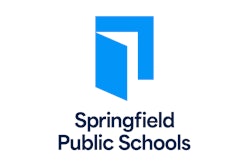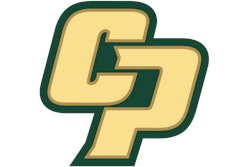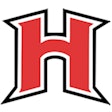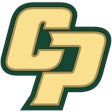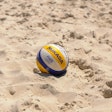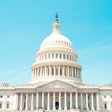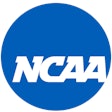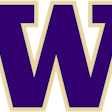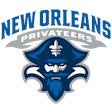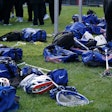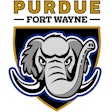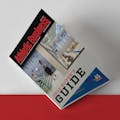This article originally appeared in the September 1990 issue of Athletic Business.
Black colleges and universities need to be more creative in marketing their sports programs
Log in to view the full article
This article originally appeared in the September 1990 issue of Athletic Business.
Black colleges and universities need to be more creative in marketing their sports programs
The time has come for historically black colleges and universities (HBCUs) to capitalize on the marketing value of their athletic departments. Not typically equipped with the financial resources to employ qualified personnel to accomplish even the most modest marketing goals, these schools need to employ more imaginative (or “right-brain”) thinking to rescue themselves from drowning in economic red seas.
Many researches have advanced the notion that the left side of one’s brain is more scientific and analytical, while one’s imaginative and creative powers are housed in the right side. Although there is an obvious need for critical analysis (left-brain function), there is an equal need for free expression, uninhibited contemplation and risk-oriented though (right-brain functions).
Too often HBCU athletic departments are stifled by problems of student attrition, inadequate or non-existent facilities, overworked and underpaid staff, and limited financial resources. Faced with all that, there is little time to be creative.
Further complicating matters, desegregation has given non-HBCU schools the upper hand in recruiting minority athletes. As a result of this drain on the talent pool that had once been reserved for HBCU schools, the skill level at black colleges is not the same as it was before predominantly white schools began admitting black student-athletes.
Not too long ago, HBCU fans paid to witness the exploits of football players like Doug Williams (Grambling State), Walter Payton (Jackson State) and Jethro Pugh (Elizabeth City State); basketball stars like Earl “The Pearl” Monroe (Winston-Salem State), Sam Jones (North Carolina Central), Bob Dandridge (Norfolk State), Marvin Webster (Morgan State); and baseball standouts like Al Bumbry (Virginia State).
Although one can argue that a smattering of HBCU alumni—players like Rich Mahorn (Hampton University) and Charles Oakley (Virginia Union University)—continue to make the pros, fewer and fewer black college athletes are being courted by the professional leagues. The reason is obvious: The skill level of most of these players does not measure up to that of their counterparts at Division I schools.
The influx of blue-chip minority athletes into non-HBCU Division I ranks has produced literally millions of dollars in gate receipts and television revenue for those institutions. With that kind of money, it’s not hard to hire creative personnel to market an athletic program.
By contrast, most HBCU athletic programs struggle along with less-than-prime-time players. Already competing against all-day cable sports programming, local high school games and generic forms of recreation, HBCU sports programs have a difficult time competing for fans’ entertainment dollar.
Since it is pretty apparent that all schools are not created financially equal, HBCU athletic programs must devise innovative marketing strategies that will unveil the potential of these institutions. It’s suggested here that right-brain thinking is the route to success. Consider the following:
Develop the proper mindset
Before embarking on any endeavor, it is imperative to properly condition the thought processes of all participants. Utilize all technological resources (cassette tapes, videos and films, for example) and human resources (guest speakers) to ensure accomplishment of this objective.
Meditate daily
Set aside some quiet time each day to think. Then relax and focus on those events that you want to see occur. Concentrate on exactly the way you expect each event to unfold. Block out all peripheral thinking.
After a couple of minutes, try to use all of your functions to sense the success of the event. See the fans packed into your arena. Hear the noise from the standing-room-only crowd cheering for your team. Taste the refreshments provided by your major sponsor. Touch the hands of the satisfied customers. Smell the aroma of the fresh popcorn being gobbled down by 10-year-olds whose dream it is to attend your college.
Remember that right-brain thinking works best with those who are capable of focusing on an event to the exclusion of any interfering thought.
Set dreamer’s goals
So what if they seem unrealistic? Realism is in the mind of the thinker. We’re on the right side now, remember? Leave rigid, conservative goal setting on the left side, where it belongs.
Have some fun: think of all the crazy ideas that left-brainers are not allowed to ponder. There have been as many “crazy” ideas that eventually became successful because risk-taking right-brainers believed they would work. If someone can make money selling pet rocks, it’s sensible to consider all marketing ideas before laughing them away. Don’t be afraid. Jot down all possibilities.
Here’s an idea we came up with at Virginia State University:
Next year (Jan. 2-6), we’ll host a national basketball tournament featuring men’s and women’s teams from HBCU institutions. Called the HBCU Basketball Classic, the tournament will provide scholarship funds, travel expenses and unprecedented exposure to each participating school. More than 100 have been invited, and the response from enthusiastic coaches and administrators—and from potential corporate sponsors—suggests that this will be a tremendous marketing bonanza.
Although cynics question our ability to stage this event, we have enough right-brainers on our side to believe that our dreams for this event will come true.
Because there are so many negative thinkers (not to be confused with positive, yet scientific left-brainers), the next point is important:
Surround yourself with excellence
To succeed with creative thinking, you must rid yourself of any association with negative or cynical thinkers. Find people whose very presence creates confidence and whose reputations or potential suggest that they would blend into your new program.
Create opportunities for alumni, retirees, faculty and staff members, boosters, community leaders and other friends of the university to get involved.
Student interns can be very helpful if properly guided and monitored. They are some of the most imaginative thinkers you may come across.
Be careful, however, that you don’t get carried away with so many right-brain pursuits that you sacrifice excellence in the area of compliance, fiscal management or related administrative domains.
Sometimes you may have to do the “dirty work” (completing forms and crunching uncooperative numbers) while your assistants have fun at alumni get-togethers and chamber of commerce breakfast affairs. You must be willing to do the following:
Subordinate your ego at the proper time
Know when to back off and let someone else have the floor. Give credit to the deserving and give them opportunities to be applauded. Remember, they’re on your side and everyone must be willing to make sacrifices for the team, including you, the administrator.
Be unselfish
The team concept extends beyond your institution. HBCU schools must communicate and cooperate if creative sports marketing is to succeed.
Sometimes you may have to alter the site of a previously planned game or adjust your schedule so that others may benefit. HBCU schools should ensure that major events, such as homecomings, are not played on the same days as those of other regional institutions.
HBCU institutions need to know the “lay of the land” before embarking on creative marketing. One way to accomplish this objective is to follow the next recommendation:
Conduct research
Demographic studies on the typical fan should be conducted to determine who should be the target of your marketing strategies. Analyze the needs and wishes of your community before establishing dates for major events. Be sure to compare schedules with other area sports competitors, as well as with community groups.
Often, action plans can be secured from others who have successfully completed similar projects. That’s why it’s important to consider the following:
Be resourceful
Right-brain thinking can be triggered in a number of ways. To succeed as a right-brain-oriented marketing entrepreneur, HBCU leaders should attend professional development seminars and workshops, even if they have to be self-financed.
Right-brain thinking can be stimulated by interfacing with, for example, Division I experts with finely tuned marketing programs. Division II and III and NAIA leaders also have much to offer, and it would be prudent for HBCU schools to study all successful ideas from as many qualified sources as possible.
Remember, right-brain thinkers are not afraid to use someone else’s ideas. There’s no shame in copying successful marketing strategies. In fact, it’s a shame that more aren’t in place at most HBCU schools.
Strive for collective mobilization. The Central Intercollegiate Athletic Association Basketball Tournament and the Bayou Football Classic (Grambling State vs. Southern University) are well-known showcases of HBCU athletic talent and among the few stellar examples of the largely untapped marketing potential of black college sports.
Although these events are well-marketed, the trouble is that not enough of these events are taking place. HBCU schools need to pool resources and schedule other marquee events that have equally huge revenue potential. Classic matchups between HBCU institutions would present major marketing opportunities. (The aforementioned HBCU Basketball Classic has that kind of appeal.)
After scheduling arrangements have been consolidated, the chances of attracting corporate sponsors will be strengthened. With the proper backing, HBCU schools would be afforded more national acclaim and revenue opportunities than at any point in their respective histories.
Right-brain thinking can provide the backdrop for HBCU events. Utilizing the proper mental programming techniques, coupled with unselfish and shrewd scheduling, HBCU sporting events can finally reach their potential. Maybe then, more HBCU programs will be rescued from the “red seas.”
This article originally appeared in the September 1990 issue of Athletic Business.













